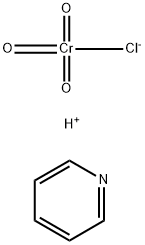ETHYLALUMINUM DICHLORIDE
Synonym(s):Dichloro(ethyl)alumane solution
- CAS NO.:563-43-9
- Empirical Formula: C2H5AlCl2
- Molecular Weight: 126.95
- MDL number: MFCD00000457
- EINECS: 209-248-6
- SAFETY DATA SHEET (SDS)
- Update Date: 2025-01-27 09:38:02

What is ETHYLALUMINUM DICHLORIDE?
Chemical properties
Clear colorless to yellow solution
Chemical properties
The aluminum alkyl halides are flammable, reactive, and may be spontaneously combustible in air. They are colorless to yellow liquids. Ethylaluminum dichloride:(563-43-9):
The Uses of ETHYLALUMINUM DICHLORIDE
Ethylaluminum dichloride is used as a catalyst component in the polyolefin industry, for the synthesis of synthetic rubbers and for the dimerisation of olefins. It is also employed as a catalyst for Friedel-Crafts acylations.
The Uses of ETHYLALUMINUM DICHLORIDE
Catalyst for olefin polymerization, aromatic hydrogenation; intermediate.
General Description
A colorless to light-yellow heated liquid. Freezing point 90°F.
Air & Water Reactions
Highly flammable. Ignites when exposed to air. Reacts violently with water or moisture in air forming hydrogen chloride fumes and flammable ethane gas (Rose 1961).
Reactivity Profile
Organometallics, such as ETHYLALUMINUM DICHLORIDE, are reactive with many other groups. Incompatible with acids and bases. Organometallics are good reducing agents and therefore incompatible with oxidizing agents. Often reactive with water to generate toxic or flammable gases. Organometallics containing halogens (fluorine, chlorine, bromine, iodine) bonded to the metal typically with generate gaseous hydrohalic acids (HF, HCl, HBr, HI) with water.
Hazard
Ignites on contact with air, dangerous fire risk, reacts violently with water. Skin irritant.
Health Hazard
Inhalation of smoke from fire causes metal-fume fever (flu-like symptoms); acid fumes irritate nose and throat. Contact with liquid (which is spontaneously flammable) causes severe burns of eyes and skin.
Potential Exposure
These materials are used as components of olefin polymerization catalysts. The reader is referred to the entry on “Aluminum alkyls” for additional information on this entry. The aluminum alkyl halides parallel very closely the aluminum alkyls
Shipping
UN3052 Spontaneously combustible. Water reactive releasing large quantities of toxic and deadly hydrogen gas. (Note: this number does not appear in the 49/CFR HazMat tables)
Incompatibilities
The aluminum alkyl halides are strong reducing agents; they react—possibly violently—with oxidizers (chlorates, nitrates, peroxides, permanganates, perchlorates, chlorine, bromine, fluorine, etc.); contact may cause fires or explosions. Keep away from alkaline materials, strong bases, strong acids, oxoacids, epoxides. These chemicals react violently with nitromethaneEthylaluminum sesquichloride reacts explosively with carbon tetrachloride at room temperature. This chemical reacts violently with water, forming corrosive hydrogen chloride and flammable ethane gas. Diethylaluminum chloride may form an explosive product with chlorine azide.
Properties of ETHYLALUMINUM DICHLORIDE
| Melting point: | 32 °C(lit.) |
| Boiling point: | 68-70°C |
| Density | 0.927 g/mL at 25 °C |
| vapor pressure | 5 mm Hg ( 60 °C) |
| Flash point: | 40 °F |
| storage temp. | 0-6°C |
| form | Liquid |
| Specific Gravity | 0.927 |
| color | Colorless to pale yellow |
| Water Solubility | Soluble in acetone. Miscible with alcohol, chloroform, ether. Reacts with water. |
| FreezingPoint | 32℃ |
| Sensitive | Air & Moisture Sensitive |
| Hydrolytic Sensitivity | 8: reacts rapidly with moisture, water, protic solvents |
| Merck | 326 |
| BRN | 4123357 |
| Exposure limits | ACGIH: TWA 50 ppm (Skin) OSHA: TWA 500 ppm(1800 mg/m3) NIOSH: IDLH 1100 ppm; TWA 50 ppm(180 mg/m3) |
| CAS DataBase Reference | 563-43-9(CAS DataBase Reference) |
| EPA Substance Registry System | Aluminum, dichloroethyl- (563-43-9) |
Safety information for ETHYLALUMINUM DICHLORIDE
| Signal word | Danger |
| Pictogram(s) |
 Flame Flammables GHS02  Corrosion Corrosives GHS05  Exclamation Mark Irritant GHS07  Health Hazard GHS08 |
| GHS Hazard Statements |
H225:Flammable liquids H260:Substances And Mixtures Which, In Contact With Water,Emit Flammable Gases H304:Aspiration hazard H314:Skin corrosion/irritation H336:Specific target organ toxicity,single exposure; Narcotic effects H373:Specific target organ toxicity, repeated exposure H412:Hazardous to the aquatic environment, long-term hazard |
| Precautionary Statement Codes |
P210:Keep away from heat/sparks/open flames/hot surfaces. — No smoking. P280:Wear protective gloves/protective clothing/eye protection/face protection. P231+P232:Handle under inert gas. Protect from moisture. P301+P330+P331:IF SWALLOWED: Rinse mouth. Do NOT induce vomiting. P303+P361+P353:IF ON SKIN (or hair): Remove/Take off Immediately all contaminated clothing. Rinse SKIN with water/shower. P305+P351+P338:IF IN EYES: Rinse cautiously with water for several minutes. Remove contact lenses, if present and easy to do. Continuerinsing. |
Computed Descriptors for ETHYLALUMINUM DICHLORIDE
| InChIKey | UAIZDWNSWGTKFZ-UHFFFAOYSA-L |
ETHYLALUMINUM DICHLORIDE manufacturer
Sainor Laboratories Pvt Ltd Unit III
New Products
4,4-Difluoropiperidine hydrochloride tert-butyl 9-methoxy-3-azaspiro[5.5]undecane-3-carboxylate Indole Methyl Resin N-Isopropylurea N,N-Dicyclohexylcarbodiimide(DCC) MELDRUMS ACID 5-METHYLISOXAZOLE-4-CARBOXYLIC ACID Magnessium Bis glycinate Zinc ascorbate 1-bromo-2-butyne 2-acetamidophenol 9(10H)-anthracenone Erythrosin B, 4-Piperidinopiperidine 2-((4-morpholinophenylamino) (methylthio) methylene) malononitrile 2,4-dihydroxybenzaldehyde 3-(4-morpholinophenylamino)-5-amino-1H-pyrazole-4-carbonitrile Methyl 2-methylquinoline-6-carboxylate 2,6-dichloro-4-nitropyridine 4-Bromo-2-chlorobenzonitrile 2-(benzylamino)acetic acid hydrochloride 4-(tert-Butoxycarbonylamino)but- 2-ynoic acid 3,4-dihydro-2H-benzo[b][1,4]dioxepine 1-Phenyl-1-cycloprppanecarboxylicacidRelated products of tetrahydrofuran








You may like
-
 563-43-9 Ethyl Aluminum di-chloride Solution (25% in Toluene)View Details
563-43-9 Ethyl Aluminum di-chloride Solution (25% in Toluene)View Details
563-43-9 -
 Ethylaluminum dichloride (1.8M in Toluene)View Details
Ethylaluminum dichloride (1.8M in Toluene)View Details
563-43-9 -
 Ethylaluminum dichloride (1.0M in n-Hexane) 563-43-9View Details
Ethylaluminum dichloride (1.0M in n-Hexane) 563-43-9View Details
563-43-9 -
 Ethyl Aluminium Dichloride 1.8M CAS 563-43-9View Details
Ethyl Aluminium Dichloride 1.8M CAS 563-43-9View Details
563-43-9 -
 Ethylaluminum dichloride solution CAS 563-43-9View Details
Ethylaluminum dichloride solution CAS 563-43-9View Details
563-43-9 -
 563-43-9 Ethylaluminum dichloride 1.8M in Toluene 1.8MView Details
563-43-9 Ethylaluminum dichloride 1.8M in Toluene 1.8MView Details
563-43-9 -
 20677-73-0 (2,2-diethoxyethyl)methylamine 98%View Details
20677-73-0 (2,2-diethoxyethyl)methylamine 98%View Details
20677-73-0 -
 3-(4-(hydroxyamino)-1-oxoisoindolin-2-yl)piperidine-2,6-dione 98%View Details
3-(4-(hydroxyamino)-1-oxoisoindolin-2-yl)piperidine-2,6-dione 98%View Details
